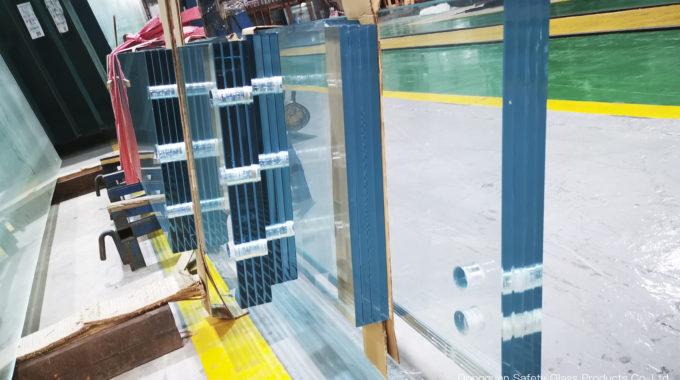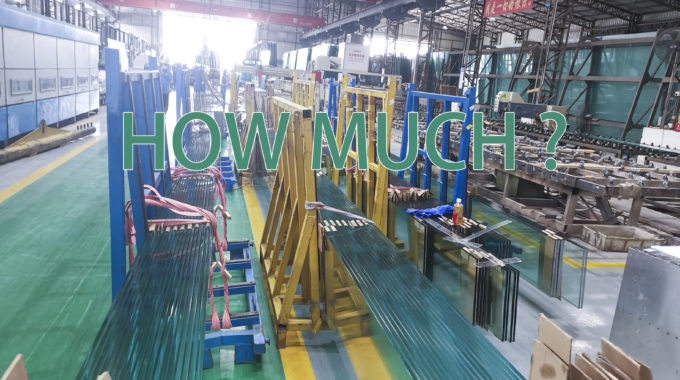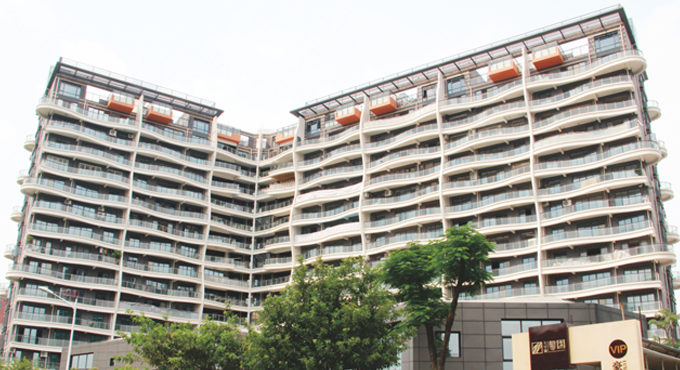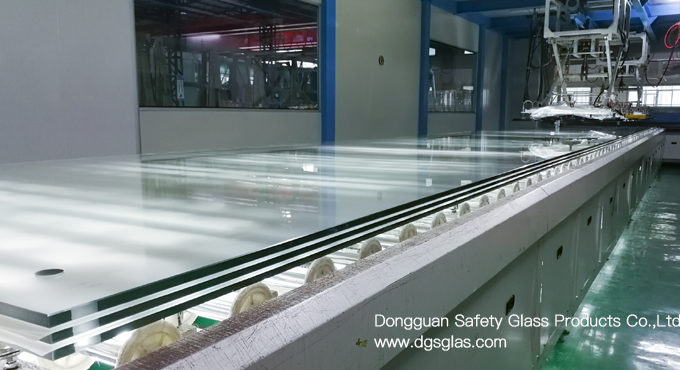
How is laminated glass made?
Tempered laminated glass is a very safe glass product. Laminated glass is used not only in the doors and windows of buildings, but also in furniture countertops and jewelry display cabinets. The production process of laminated glass is mainly: float glass cutting—side polishing—glass sheet cleaning and drying—glass sheet tempering—glass sheet cleaning and drying—glass sheet plus intermediate layer Put together—heating roll pressure or vacuum bag sealing—autoclave for high temperature and high pressure—cooling and lowering pressure—finishing finished products—checking the quality of finished products and packaging.
Laminated glass needs to work in a dust-free studio with constant temperature and humidity. Air humidity and temperature changes can cause quality problems during the later installation and use of laminated glass. Our factory is a large-scale glass reprocessing factory. We provide customers with reliable laminated glass doors and windows for a long time in large quantities. We pay great attention to every process of laminated glass in the production process.
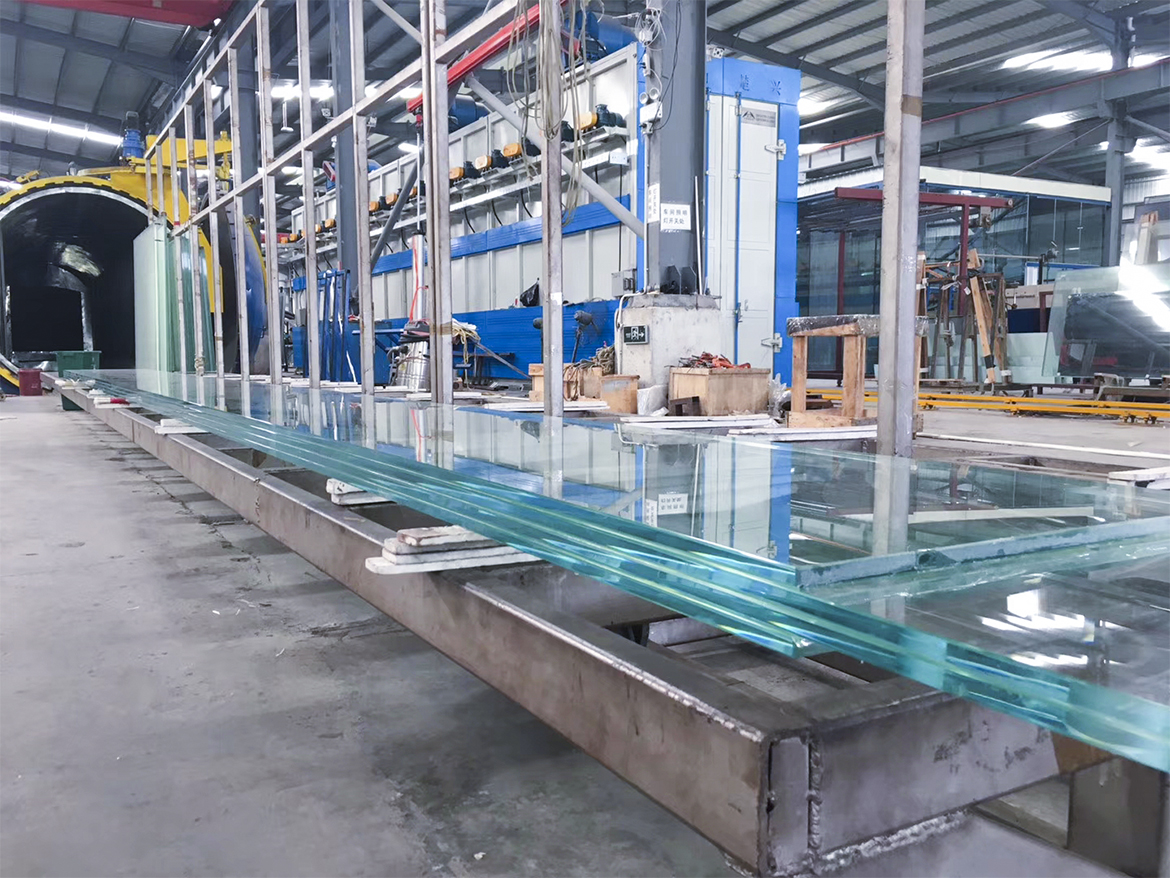
We process this laminated glass every day. If you need to buy laminated glass, you can contact us. You are welcome to our factory
1—glass cutting
We use a fully automatic computer cutting machine to ensure that the length, width and height of each piece of glass are accurate and accurate. Never cut a piece of glass or slice glass, this is our basic attitude to make high-quality laminated glass, we hope that you are happy to install our laminated glass.
2—glass edge polishing and air drying
To produce beautiful laminated glass, edge polishing is important, and clear, crystal-clear edge polishing enhances the high-quality feel of laminated glass. To produce qualified laminated glass, the quality of glass cleaning is of utmost importance. High-performance cleaning and drying equipment can quickly remove the impurities on the glass surface and prevent scratches on the glass surface.
3—glass tempering
Glass physical tempering is an important process for strengthening the properties of glass, and the requirements for equipment and workers are relatively high. We use a double convection tempering furnace of European technical standards to ensure that the temperature and time of heating and cooling of each batch of glass are the same. Ensure that the flat tempered tempered glass is horizontal and vertical, ensuring that the tempered glass radius and curvature data can be corrected correctly.
3—Laminated glass synthesis
The temperature and humidity of the laminated glass synthesis studio should be kept within the specified range. According to the standard, the temperature must be 20±3°C and the relative air humidity should be within 25±3%. Out of range will directly affect the yield of laminated glass products and various properties of laminated glass later.
The temperature of the laminated glass synthesis chamber is too high, and the PVB intermediate layer loses its basic strength and is easily folded together. When heated by rolling, the gas around the folded portion of the PVB intermediate layer cannot be discharged, and bubbles are generated. The temperature of the laminated glass composite work is too low, the strength of the PVB intermediate layer is too large, and it is not easy to fuse with the glass. When the heated roll is pressed, the glass bursts or the edge contact is uneven, and bubbles are generated.
If the air humidity in the laminated glass synthesis studio is too high or too low, the glass and PVB intermediate layers will not be completely fused. The toughness of the PVB intermediate layer is reduced, and the safety performance of the laminated glass is greatly reduced.
We strictly follow the product quality standards for production and processing, and rationally use the interlayer of laminated glass to provide the quality awareness of the production personnel. Repeatedly conduct strict inspections on the cleaned glass sheets, blow dry water traces, and remove and eliminate bubbles and impurities. Defective glass substrates such as edges are produced strictly in accordance with product quality standards. Eliminate unqualified laminated glass products from the source to the market.
4—rolling pressure
The laminated glass synthesis workshop comes out of semi-finished laminated glass, which needs to be heated and rolled to form. The heating and rolling process unites the glass sheet and the PVB interlayer. In the production of laminated glass, two heating and rolling are used.
The first heating preliminarily softens the PVB interlayer and removes air between the glass sheet and the PVB by rolling. The second heating softens the edge of the PVB intermediate layer, and the edge of the glass sheet and the PVB intermediate layer are completely bonded together by roll pressing to form a side seal state, thereby preventing air from entering between the glass and the PVB again. The rolling pressure is usually maintained between 3 and 6 bar, and the pressure of the secondary rolling is slightly greater than the first pressure.
The surface temperature of the laminated glass after heating and rolling will reach 40~80 °C. Usually, the edge of the glass is about 5 °C~6 °C higher than the middle temperature, which can achieve better sealing effect and prevent air from the edge. Infiltrated to create bubbles. The glass temperature also changes with the thickness of the glass, mainly in the temperature difference between the intermediate layer of glass and PVB and the surface of the glass. The temperature of the surface layer is higher than the temperature of the intermediate layer. The temperature of the edge of the laminated glass is affected by the heat conduction. It is about 20 °C higher than the temperature of the intermediate layer, and the rolling distance between the upper and lower sides is the total thickness of the glass composite -0.5~-2mm.
Due to the different glass raw materials and thickness, the heating time is different, and the rolling speed and heating temperature are adjusted. The surface temperature after rolling the glass is required. Fast speed, low glass temperature, slow speed and high glass temperature. The side of the laminated glass after the heating and rolling is semi-transparent, and the laminated glass is foggy or nearly transparent and has an irregular exhaust line. In the case where the laminated glass which has been subjected to the preheating and rolling processes is excellent in the exhaust gas and the side seal, the initial adhesive force is 30%, and the adhesive force of the laminated glass after the autoclave treatment is 100%.
5—container pressure
The autoclave is a high-pressure vessel and is the most critical equipment for producing laminated glass. If it is used improperly, a major fire accident will occur. The inside of the autoclave should be cleaned regularly. Timely remove flammable materials from the loading tools in the autoclave, prepare for prevention, and eliminate potential safety hazards in the production process.
Autoclave pressure range: 8bar-15bar. Autoclave temperature range: 125 ° C ~ 150 ° C.
The laminated glass placed in the autoclave must be evenly spaced with a minimum spacing of 3 cm to maintain a uniform circulation of the temperature and compressed air in the autoclave. When the laminated glass is heated and heated in the autoclave, the rise time of the pressure and temperature should be synchronized or approached. The higher the pressure and temperature in the autoclave, the better the specified pressure and temperature range. If the laminated glass finds bubbles other than the glass itself, the temperature of the controller can be increased or the pressure can be increased by adjusting the parameters of the controller and the pressure of the air compressor.
The working time of the autoclave cycle: depends on the thickness and total quantity of the laminated glass and the ability to heat and cool. The processing time is determined according to the thickness of the glass, and the laminated glass is kept at a constant temperature of 125 ° C to 150 ° C and a constant pressure of 8 bar to 15 bar for more than 30 minutes in the autoclave. In addition, the time for heating and cooling is generally about 4 hours. After gradually reducing the temperature and maintaining the pressure, the temperature drops below 50 °C. After the pressure is completely released, the furnace can be opened, and the transparency is high, the bonding force is strong, and the mechanical strength is high. Laminated glass.
The strength of the laminated glass depends on various factors: the size of the laminated glass, the thickness of the glass, the thickness of the intermediate layer of PVB, the variety of the glass sheet, etc., such as the combination of tempered or heat-reinforced laminated glass, which is superior in strength to ordinary laminated glass.
The selection of different glass sheets and different thicknesses of PVB interlayers for processing plays a key role in the quality and safety of laminated glass. In the same thickness of glass, the thickness of the PVB intermediate layer plays a decisive role: if the PVB is too thin, the product is easy to break down and increase the thickness of the PVB, which can improve the PVB toughness and strengthen the pulling force on the glass, thereby enhancing the violent invasion. Ability.
The surface layer of LOW-E glass is easily oxidized and detached. When processing LOW-E glass interlayer, the LOW-E film layer is completely insulated from air and the film layer is prevented from being oxidized. It is also necessary to clean the LOW-E substrate with pure water, remove the film at the edge of the substrate, etc., and the LOW-E glass needs to complete the splicing and rolling processes in a short time.
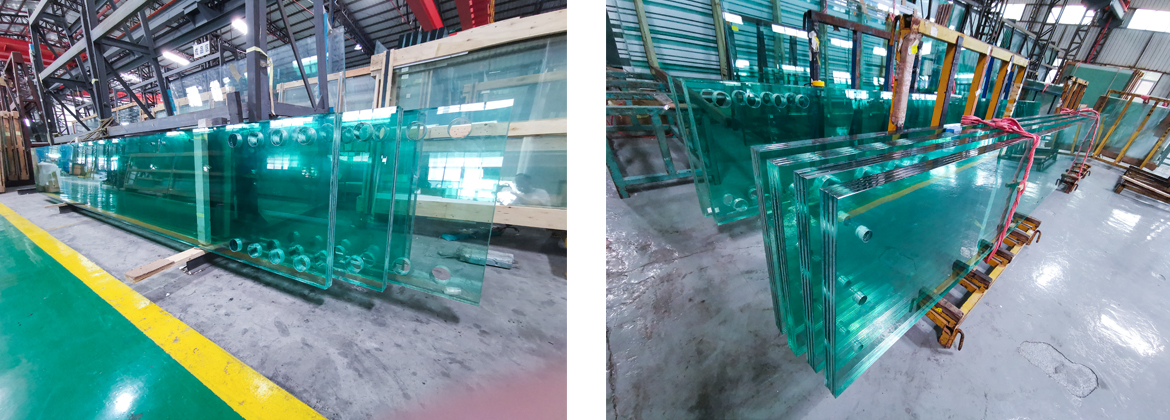
We are a professional laminated glass manufacturer, we provide you with the best laminated glass products.
The glass sheets used in the sandwich products are: high-grade float glass, tempered glass, heat-enhanced glass, bendable glass, reflective glass of various colors, glazed glass of various colors, and the like. According to the design and safety requirements, through the combination of various glass sheets and various PVB intermediate layers, it can be processed into a variety of various laminated safety glasses such as: multi-layer laminated safety glass, ordinary residential residential safety soundproof glass. , color laminated glass, glazed laminated glass, tempered laminated glass, heat-reinforced laminated glass, reflective laminated glass, windproof, explosion-proof, bullet-proof, anti-theft laminated glass, curved laminated glass, multi-layered super-strength very thick aquarium Glass, etc., to meet the needs of people at different levels and different safe places.

